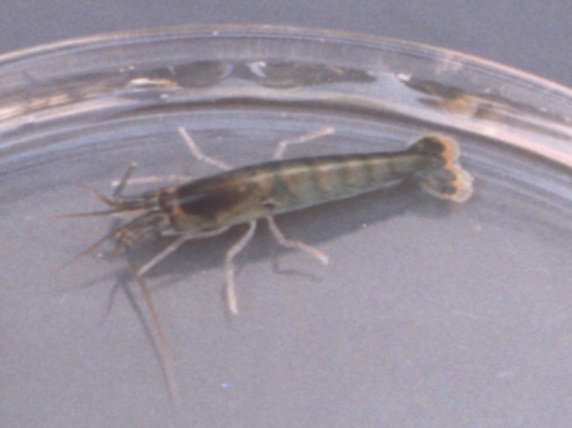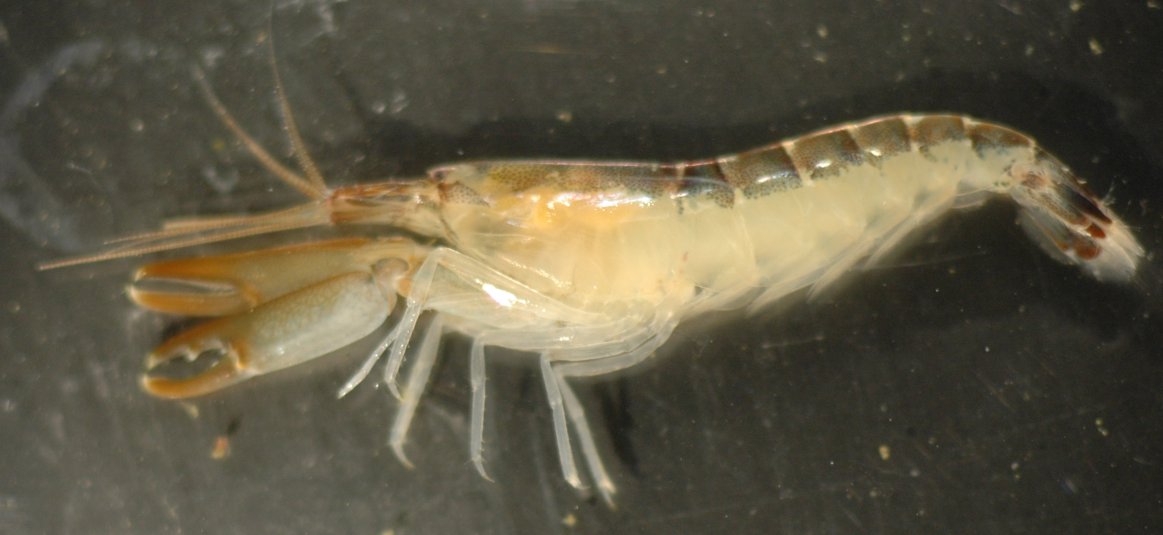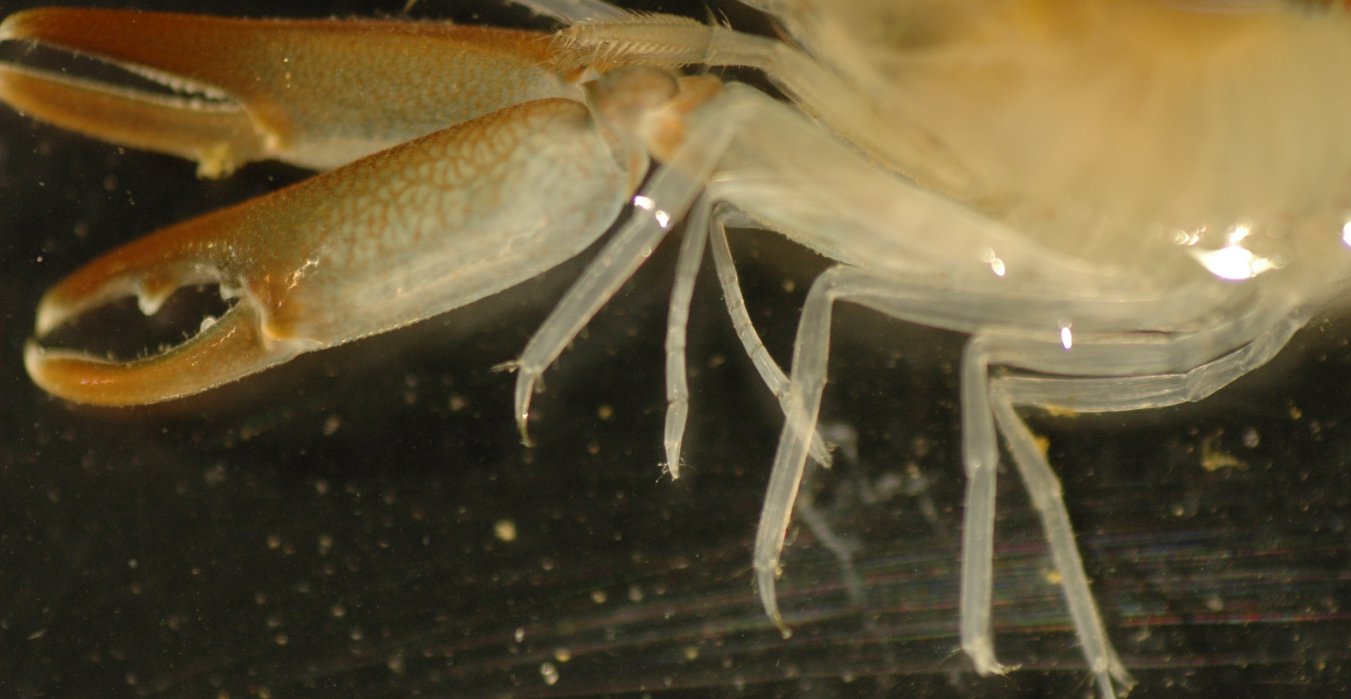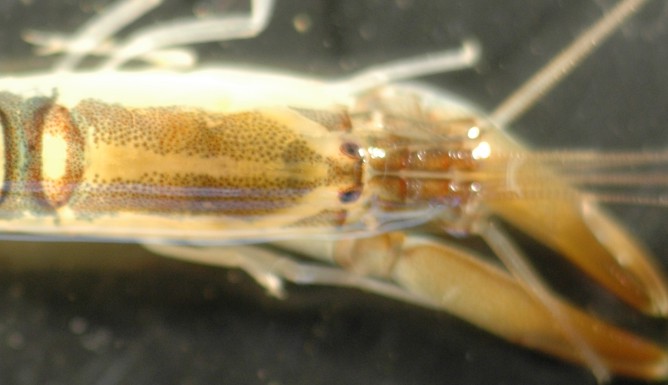Betaeus harrimani Rathbun, 1904Common name(s): Northern hooded shrimp |
|
| Synonyms: |  |
| Phylum Arthropoda
Subphylum Crustacea Class Malacostraca Subclass Eumalacostraca Superorder Eucarida Order Decapoda Suborder Pleocyemata Infraorder Caridea Family Alpheidae |
|
| Betaeus harrimani from Royal Palm State Beach, Long Beach, CA. About 3 cm long. | |
| (Photo by: Dave Cowles April, 1997) | |
How to Distinguish from Similar Species: B. setosus has an indentation on the frontal edge of the carapace and the hand of its propodus is about as wide as long.
Geographical Range: Sitka, Alaska to Dana Point, CA
Depth Range: Intertidal, probably also subtidal
Habitat: Under low intertidal rocks, logs, and debris, mostly on protected shores; on mud flats, especially in the burrow of Upogebia pugettensis and Neotrypaea (formerly Callianassa) californiensis.
Biology/Natural History: This is an actively moving and usually well-camouflaged shrimp. Eggs are bright green. Females in British Columbia carry eggs from June to September.
Return to Main Page
References:
Dichotomous Keys:Kozloff 1987, 1996
Smith and Carlton, 1975
Wicksten, 2009
General References:
Jensen,
1995
Morris
et al., 1980
O'Clair
and O'Clair, 1998
Scientific Articles:
General Notes and Observations: Locations, abundances, unusual behaviors:

In this side view, the hood that covers the eyes can be seen.
Animal total length is 3 cm. Photo by Dave Cowles, July
2005.
Captured in a Upogebia
pugettensis burrow.
Photos of features used for identifying this species:

All 5 "walking" legs (pereopods). Leg 1 = chelae, leg 2 is
slender,
and the carpus is subdivided into sections (visible in the picture,
characteristic
of all Alpheids). Legs 3-5 are for walking.

There is no rostrum nor indentation on B. harrimani--the
anterior
end of the carapace is rounded.
Authors and Editors of Page:
Dave Cowles (2005): Created original page